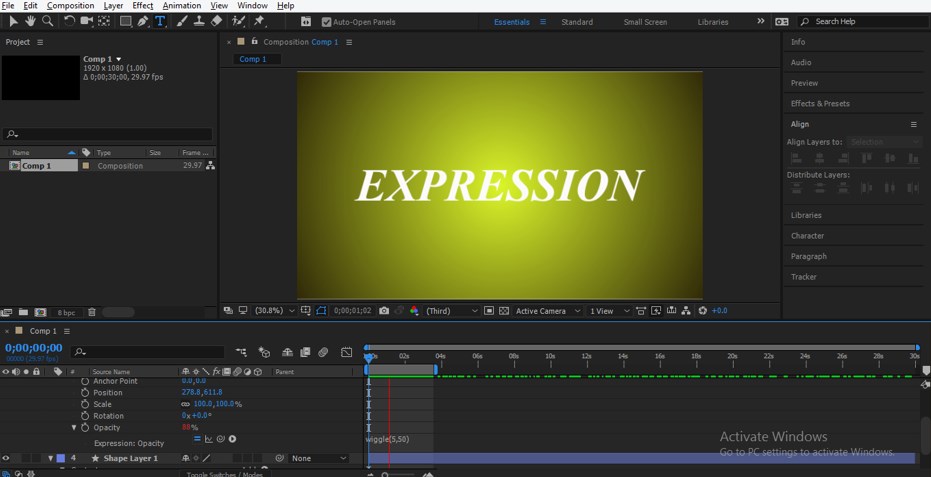

Using a coding language adapted from javascript, you can use all sorts of customizable commands to apply complex motion to layers. Pressing the alt/option key, click the stopwatch beside “position.” When you see the position text turn red and begin typing in the timeline, you are creating what is called an “expression” in After Effects.

I want to apply a wiggling or shaking effect to both of these layers, so I will repeat these steps for both objects. For this example, I have an image of pancakes and then some stars.

The expression in the previous example (scale), will not work if you apply it to the position. Wiggle x or y Position w = wiggle(freq,amp) ,w] The expression at the top is wiggle(0.5,100), then wiggle(1,100), then (wiggle(1.5,100) and so on until we get to very bottom, where the expression is wiggle(3.5,100).Īs you can see in the example, the further down we go, the faster the x position changes. From top to bottom, the only difference is the frequency, which is going up in 0.5s. If you input ‘ 2’ then the value will change twice per second, and so on.īelow is an example that is affecting the x position. If you input ‘ 1’, then the value will change once per second. This is the amount of times the value changes per second. The expression may have automatically added the final bracket, but add this at the end if not )Īn example expression looks like this: wiggle(2,10)Īs mentioned previously, the first number is the frequency, but what is the frequency? Now enter a second number, which is the amplitude of the wiggle. Whilst holding option on a mac, or ALT on a PC, click the stopwatch next to your desired propertyĮnter your first number, which is the frequency in which the wiggle occurs, followed by a comma ( ,)


 0 kommentar(er)
0 kommentar(er)
